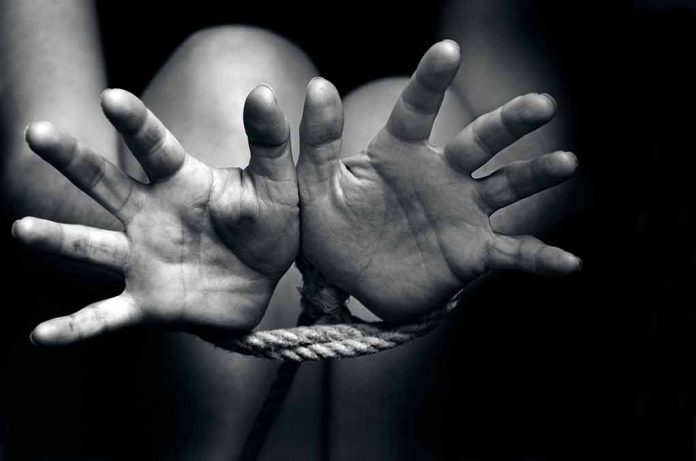
Lane County’s battle against human trafficking gathered momentum during a pivotal community discussion, leaving many eager to see how local leaders will implement collaborative solutions.
Key Takeaways
- A substantial panel discussion on human trafficking took place in Eugene, emphasizing awareness and victim support.
- Lane Transit District is actively involved, pledging buses as safe spaces for youth.
- Native Americans, especially women, face higher trafficking risks.
- The Human Trafficking Hotline identified over 250 victims in Oregon last year.
- Trafficking remains complex, with no direct crime definition in Oregon law.
Community Efforts and Awareness
Eugene’s Hult Center recently hosted a significant conversation on human trafficking, orchestrated by the Junior League of Eugene. This panel gathered over 150 attendees, some of whom advocated for Missing and Murdered Indigenous People (MMIP). Native Americans, particularly women, are disproportionately targeted, shedding light on the cultural and social factors exacerbating this tragedy.
The panel underscored the role of thorough community engagement in battling trafficking, stressing awareness programs, victim support initiatives, and enhanced educational efforts. “I would rather save who we can by being who we are,” notes Amanda Freeman, a member of the Confederated Tribes of Grand Ronde. “And if we spread awareness, teach one new person one new thing, then that’s something.”
Inadequate Resources and Legal Complexities
The issue is compounded by logistical difficulties, as trafficking does not appear as a specific crime under Oregon law. This lack of legislation leads prosecutors to pursue related charges such as sexual abuse or coercion. Lane County District Attorney Chris Parosa emphasized the need for legal adjustments, stating, “There is no crime of ‘human trafficking’ in the law. We evaluate each case based on an ability to prove the state’s-level crimes beyond a reasonable doubt.”
Prosecution is further hindered by victims’ fears of reprisal or blackmail, with many remaining uncertain about their victimhood status. Oregon’s trafficking cases often lurk under the guise of other infractions, complicating victim identification and protection efforts.
Solutions and Future Directions
Locally, Lane Transit District (LTD) contributes forcefully with its federal campaign against trafficking. Their buses now function as safe zones for young individuals, a proactive measure to protect vulnerable groups. Sarah Koski of LTD commented, “Every one of our buses is a designated safe place for youth. We partner with Looking Glass, our downtown station, and our Springfield station as well.”
Efforts like these from local organizations and government bodies highlight the importance of concerted community action. Education is pivotal, with programs tailored for school bus drivers and locals to identify and address trafficking effectively. Moreover, initiatives from organizations like Lane County Against Trafficking and Kids FIRST focus on aiding vulnerable youth and other at-risk groups.





